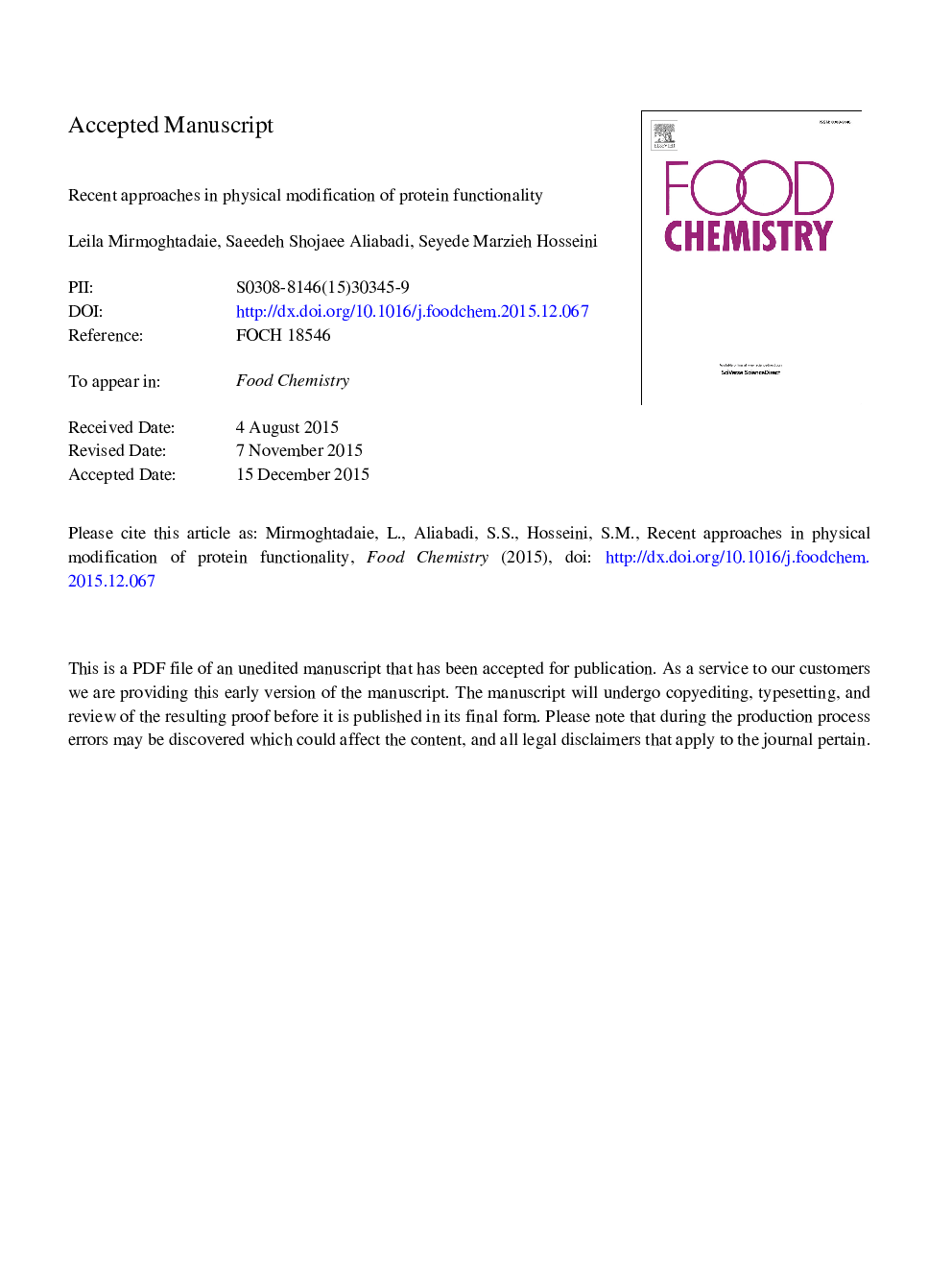| Article ID | Journal | Published Year | Pages | File Type |
|---|---|---|---|---|
| 7589626 | Food Chemistry | 2016 | 36 Pages |
Abstract
Today, there is a growing demand for novel technologies, such as high hydrostatic pressure, irradiation, ultrasound, filtration, supercritical carbon dioxide, plasma technology, and electrical methods, which are not based on chemicals or heat treatment for modifying ingredient functionality and extending product shelf life. Proteins are essential components in many food processes, and provide various functions in food quality and stability. They can create interfacial films that stabilize emulsions and foams as well as interact to make networks that play key roles in gel and edible film production. These properties of protein are referred to as 'protein functionality', because they can be modified by different processing. The common protein modification (chemical, enzymatic and physical) methods have strong effects on the structure and functionality of food proteins. Furthermore, novel technologies can modify protein structure and functional properties that will be reviewed in this study.
Related Topics
Physical Sciences and Engineering
Chemistry
Analytical Chemistry
Authors
Leila Mirmoghtadaie, Saeedeh Shojaee Aliabadi, Seyede Marzieh Hosseini,
